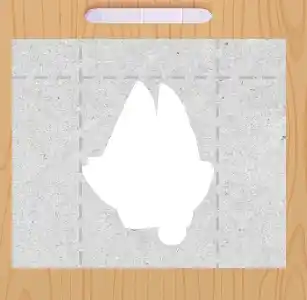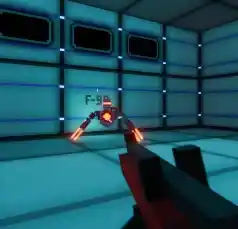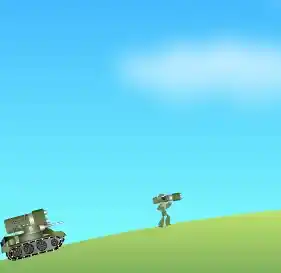Exploring the Shuttle Deck: The Command Center of Space Exploration
Space exploration has always fascinated humanity. From the iconic Apollo missions to the mysteries of Mars, our curiosity about the cosmos has driven incredible innovation. But while the rockets and space stations grab headlines, there’s one essential area that deserves your attention when it comes to piloting a spacecraft into orbit and back home safely. Enter the Shuttle Deck, the nerve center of every space shuttle mission and a vital part of human spaceflight history.
If you’ve ever wondered where astronauts control the shuttle, coordinate operations, and make crucial decisions, keep reading to learn more about the marvel that is the space shuttle flight deck.

What Is the Shuttle Deck?
It is also known as the flight deck, where the magic of a space shuttle mission happens. Located at the very top of the shuttle’s crew compartment, the flight deck is essentially the cockpit of the space shuttle. This is where astronauts operate the shuttle, communicate with mission control, and oversee the complex systems required for space travel.
Unlike airplanes, its designed specifically for the harsh conditions of space. It’s equipped with advanced controls, navigation systems, and custom-designed instruments that allow astronauts to pilot the spacecraft through launch, orbit, and landing. The space shuttle flight deck wasn’t just a cockpit; it was a high-tech command center for every phase of the mission.
The Layout of the Space Shuttle Flight Deck
- The Forward Flight Deck
This is the primary area where the commander and pilot sit. It includes the main controls, flight displays, and navigation systems needed to guide the shuttle. The forward flight deck is home to the shuttle’s most essential systems, including the guidance, navigation, and control interface.
The commander, seated in the left-hand seat, has overall responsibility for the flight. Meanwhile, the pilot assists with operations and acts as a backup for the commander. The layout is designed so both astronauts have access to critical functions, enhancing safety during high-stress moments, such as launch and landing. - The Aft Flight Deck
Situated behind the forward section, the aft flight deck is where astronauts operate the shuttle’s payload bay and docking systems. This area plays a crucial role during missions involving satellite deployment, space station docking, or scientific experiments in zero gravity.
Numerous controls and up to ten windows on the flight deck allow astronauts to monitor operations both inside and outside the spacecraft, including views of Earth and space.
Advanced Systems in the Shuttle Deck
Glass Cockpit Displays
Introduced in later shuttle missions, advanced glass cockpit displays replaced many analog instruments. These monitors provided astronauts with flexible, real-time data displays, making it easier to monitor multiple systems at once.
Orbital Maneuvering System (OMS)
The OMS controls allow astronauts to fine-tune the shuttle’s position in orbit. These maneuvers are critical for scientific experiments, deploying or retrieving payloads, and docking with the International Space Station (ISS).
Control Panels
The shuttle flight deck boasted over 2,000 switches, controls, and circuit breakers. Every single one had a specific purpose, ensuring astronauts could handle any situation, from launching rockets to managing life-support systems.
Head-Up Display (HUD)
Pilots had access to HUD systems that projected essential flight data directly onto their screen of vision. This technology helped them focus on flying while keeping critical information right in view.
Communication Systems
Staying connected with NASA’s Mission Control was key for every shuttle mission. It was equipped with high-tech radios and antennas to communicate commands, receive updates, and collaborate in real time.
Life Aboard the Space Shuttle Flight Deck
- Time on the space shuttle flight deck wasn’t always serious business. While its primary purpose was complex spacecraft operation, it often doubled as a window to the stars. With the flight deck’s expansive windows, astronauts could spend their downtime observing breathtaking views of Earth, the moon, and the surrounding universe.
- During missions, you’d often find astronauts reclining in their seats during orbital operations, utilizing zero gravity to float around the cabin. When not engaged in intense flight tasks, they were monitoring experiments, taking photographs, or even catching a glimpse of their destination, such as the ISS or a distant satellite.
- The shuttle’s design prioritized function, but it also offered astronauts the chance to experience the wonder of spaceflight firsthand, even if only for a moment.
Conclusion
It stands as one of the most important innovations in the history of space exploration. From its sophisticated design to its life-saving systems, it served as the heart of NASA’s shuttle missions. It’s where astronauts controlled every aspect of their missions, from takeoff to touchdown, and where some of the most iconic moments of human spaceflight occurred.
Whether you’re passionate about the history of space exploration or curious about the technology behind it, the space shuttle flight deck is a shining example of human ingenuity. It’s proof that with the right tools and a lot of determination, we can conquer the final frontier.













.webp)

.webp)









.webp)